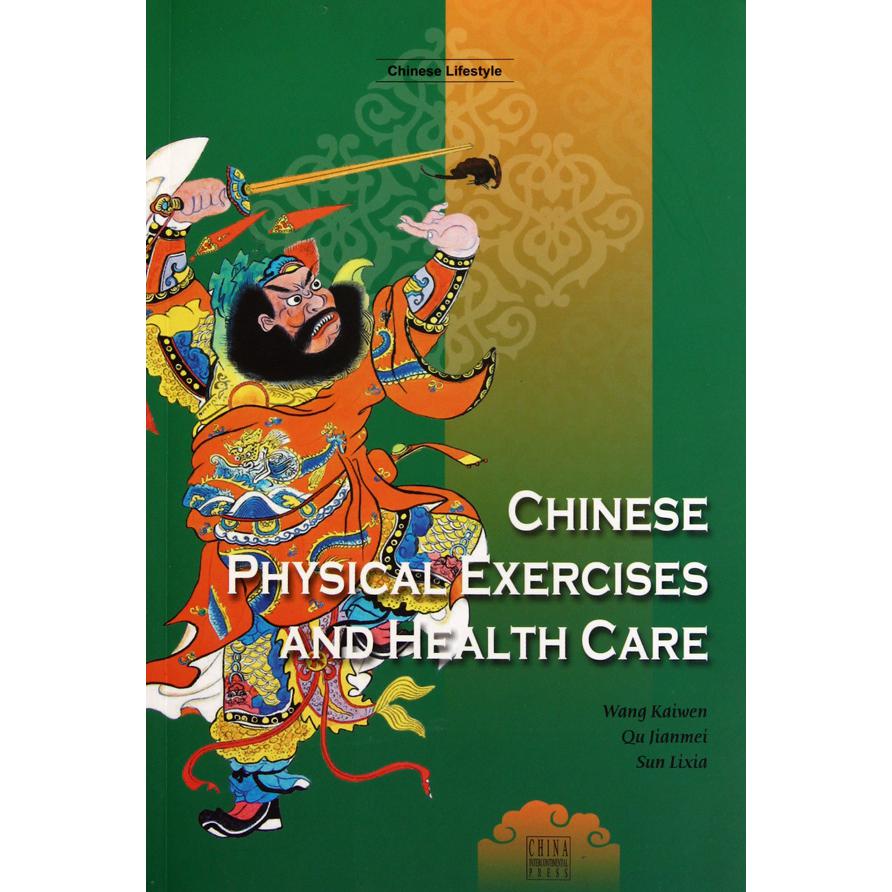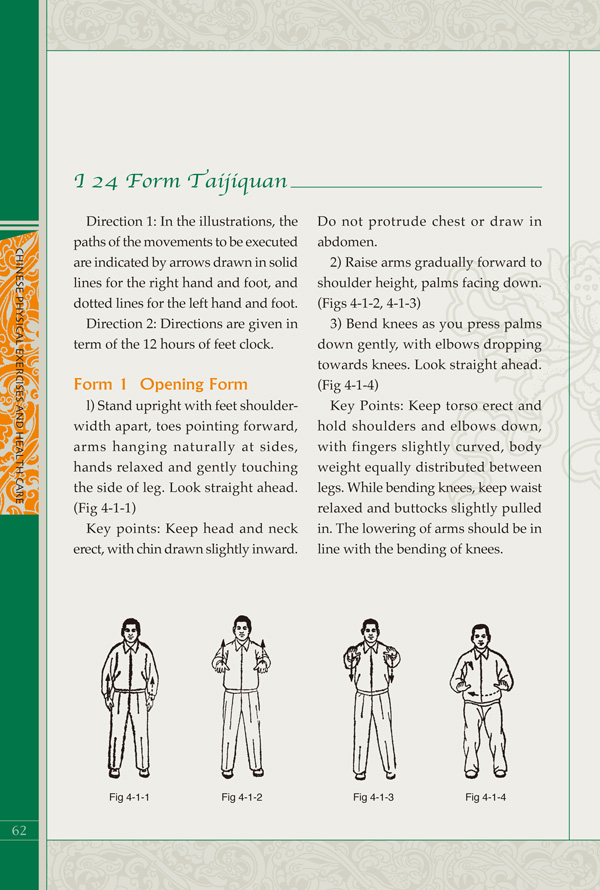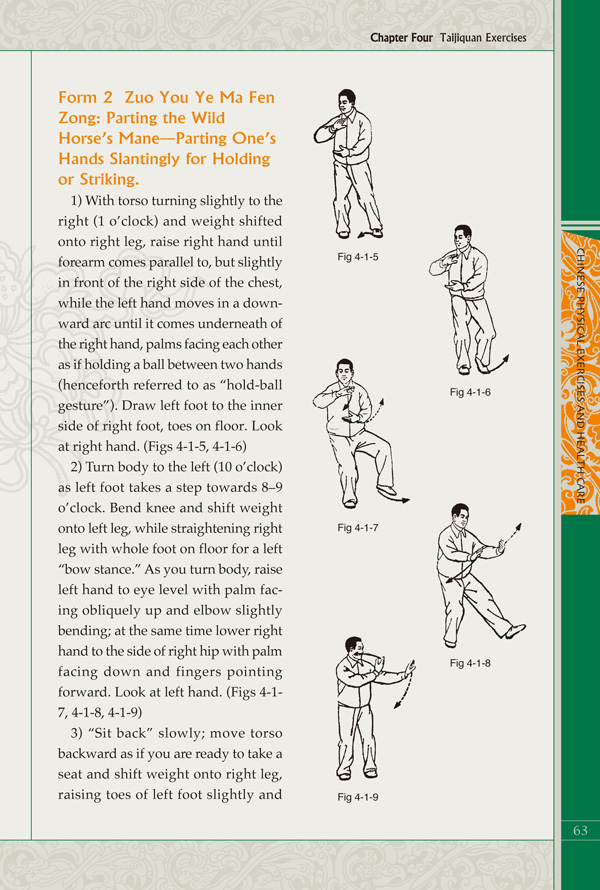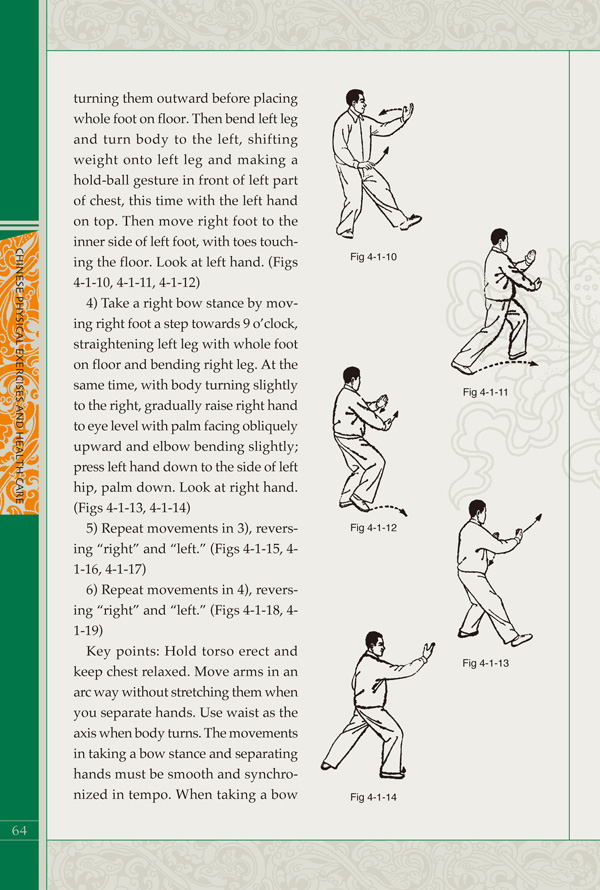
出版社: 五洲传播
原售价: 86.00
折扣价: 48.16
折扣购买: 中国人的健身养生(英文版)
ISBN: 9787508518916

Chapter Three A Brief Introduction to Qigong Exercises I Connotation of Qigong With a variety of nicknames in ancient times, Chinese Qigong boasts a long history. It is not only a good way for people to cure illnesses, build up health, deter aging and prolong life, but also a key to exploring the mysteries of human physical science in contemporary time. Qigong, a self-practice exercise aiming at refining qi, requires practitioners to exert subjective initiative to shape both the body and the spirit. As a comprehensive exercise, it is an initiativeprocess of self-adjustment which plays the role of self-reliance, self-repair, self-regulation and self-building. In Qigong exercise, qi is also known as genuine qi. In the view of TCM, it includes congenital qi and acquired qi. Inherited from parents, congenital qi is the primary substance, the basis for the formation of the embryo, and the elementary substance active for human body to maintain the physiological functions of tissues and organs. Acquired qi is the air we breathe and the refined food essence generated by the nutrients digested and absorbed by the zangfu organs to maintain man’s life activities. Interdependent and interacting, congenital qi and acquired qi constitute the genuine qi indispensable for man’s life activities, the former being the basis and the motive force, and the latter the substantial source constantly nourishing and replenishing the body for all kinds of motivation. Genuine qi accumulates and flows throughout the body following certain laws and paths. Meridians and collaterals are the passages for its circulation and transportation. Hence, to refine qi is to transport qi along the channels so that it can reach the internal zangfu organs, limbs and bones, to provide sufficient energy to body tissues, activate metabolism and strengthen physiological functions of human body. “Qi” as in Qigong is a special and objective life phenomenon. “Gong,” namely “kungfu,” has a broader range of connotations, such as the duration, quality, methods, achievements, and skills, etc. To sum up, the practice that makes genuine qi flow smoothly and exuberantly in human body is the true meaning of “gong.” The duration of the exercise of Qigong reflects the will and determination of the practitioners. Qigong exercise needs persistence and perseverance; otherwise it is difficult to achieve success. The quality of Qigong exercise is associated with the level of achievements. As sufficiency of genuine qi makes the body strong, to exercise is to cultivate and refine the genuine qi, which consists of the cultivation of mind-intention, regulation of breath and body constitution, the three elements in Qigong exercise. Chinese Qigong can be roughly divided into five schools, namely, the Taoist, Buddhist, Confucius, Medical and Wushu schools. The Taoist Qigong gives consideration to both the spirit and body constitution, with equal emphasis on physical exercise and health care. The Buddhists mainly concentrate on spirit cultivation, leaving physical training out of account. It stresses “rectification of one’s heart,” “sincerity in one’s thought” and “cultivation of a person.” The Confucian Qigong strives for “mind-rest, concentration, stillness.” The Medical Qigong is aimed at curing diseases for health care and longevity, which is represented by the vast majority of ancient medical practitioners who are simultaneously Qigong masters. And Wushu Qigong emphasizes body training for the very effect in self-defense and fighting, which, while contributing to health care and longevity, is distinctively different from other health care Qigong schools. However, in various styles of Wushu Qigong, there are also some elements taken from Buddhism, with Taijiquan as a typical example. On the other hand, most hard-form Qigong exercises are derived from Wushu. Though with various feathers, all Qigong exercises can be divided into three categories in terms of the practicing forms: the static, dynamic, and combined exercises. Whatever method is adopted, concentration is a prerequisite for achieving the desired result.


